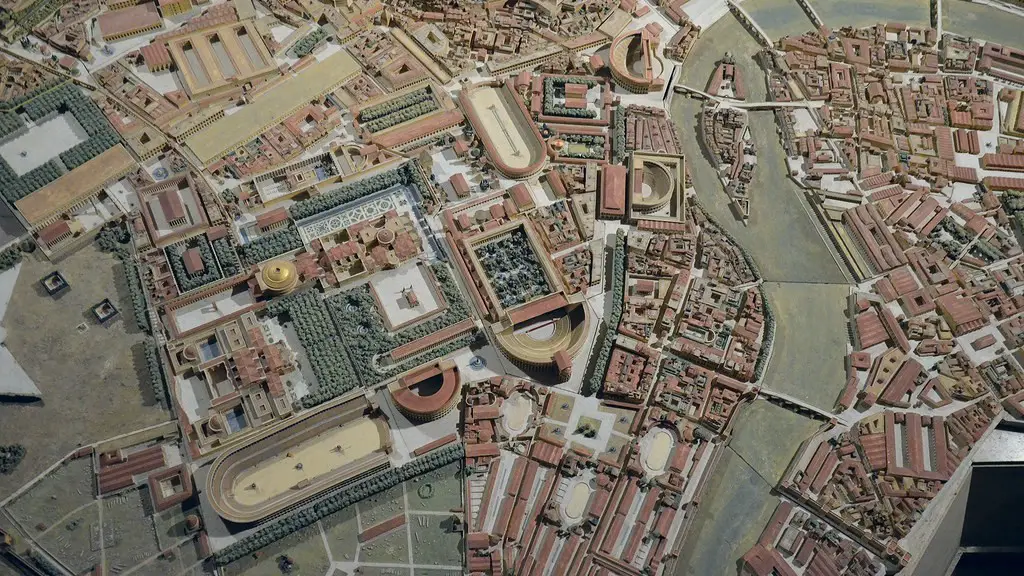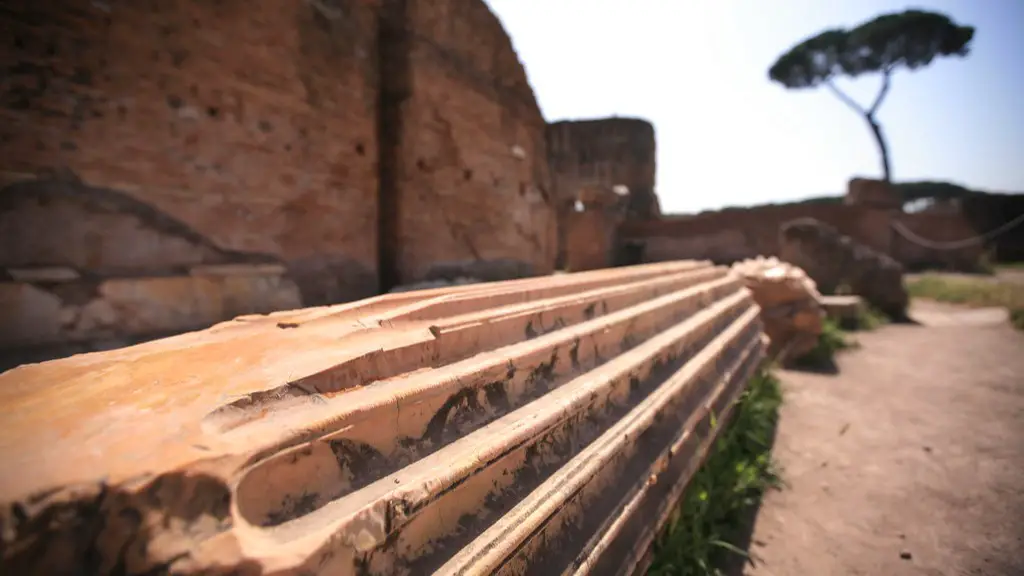However, the creation of Ancient Rome has been debated for centuries. While some believe that the city was founded by Romulus and his younger twin brother Remus, others argue that the story is a myth and that the city was at least partially created by immigrants from other parts of the Mediterranean, such as the Greeks and Etruscans.
Although it is certain that Romulus was the first king of Rome, historians are not sure who actually founded the city. According to legend, Romulus and Remus were the sons of Mars and a priestess, Rhea Silvia. The twins were abandoned at birth and left to die, but they were saved by a she-wolf who nursed them until they were rescued by the shepherd, Faustulus.
The traditional view is that Romulus and Remus were the true founders of Ancient Rome. The story goes that, after grew up, they returned to the Palatine Hill where Romulus killed his brother, while some versions of the story state they decided to found a city together in order to mark their union. This was the birth of Ancient Rome.
Despite the traditional story, there is ample evidence to suggest that Ancient Rome did not emerge from the story of Romulus and Remus. Archaeologists have found pottery and other artifacts that suggest the area was already inhabited by the Etruscans when the brothers supposedly chose the site for the city. The Etruscans were a people who inhabited Italy long before the birth of Romulus and Remus and their language was unrelated to Latin. This suggests that Rome was at least partially created by the Etruscans.
However, the exact circumstances of the creation of Ancient Rome remain unclear. It is likely that the city had multiple founders and that it was built on the ideas and values of many different civilizations. Furthermore, the city was populated by people from all over the Mediterranean, with Greek colonists in particular making an important contribution.
A Military Centre
Ancient Rome is renowned for its military might, which allowed the city to expand and conquer much of the known world. Its army was more disciplined and organized than other armies of the ancient world and its influence can be seen in the many military innovations it brought with it, such as the use of mounted troops and the formation of legions.
However, the success of the Roman Army was not just due to its military innovations. The Romans had a series of impressive fortifications, such as the famous Servian Wall, which had been built around the city in the fourth century BC by Roman consular, Marcus Servius Tullius. This allowed the city to stand firm against any invading force and become a major military power.
In addition to its military might, Ancient Rome was also famous for its civil service system. This allowed officials to administer the many cities of the empire and ensured that the law was interpreted and enforced fairly. It was this sophisticated bureaucracy that helped to make Roman rule immensely successful, allowing the Romans to effectively manage the vast territories they had conquered.
Political System
The political system of Ancient Rome was also highly advanced and was used as a model for later republics and democracies. The Roman Republic was established in 509 BC and remained in place for nearly 500 years. At its head was the Senate, a powerful body consisting of wealthy and influential men who held the ultimate say in matters of law.
The Senate was formed to be a check on the power of the Roman consuls, who were elected annually to lead the Senate. The Senate was also responsible for deciding on foreign policy, as well as matters of law and justice. This system of checks and balances ensured that no single person or group was given too much power and allowed Ancient Rome to successfully govern its vast empire.
Religious Centre
The Ancient Romans had an important relationship with their gods and their religious practices were closely entwined with the city’s social, political and military life. They believed that the gods were responsible for sending the season’s rains, for making the crops grow, and for protecting their cities from enemies.
To honour their gods and ensure their protection, the Ancient Romans built temples and conducted rituals. They sought help from gods like Mars and Apollo, who were closely associated with the Roman military, and built grand temples to honour the gods. In addition, they conducted special Roman festivals, such as the Ludi Romani, in honour of their gods.
Legacy
Ancient Rome’s legacy can still be seen in the modern world. Its language, Latin, has had a profound influence on the European languages, while its political and legal system have been used as the basis for modern democracies. In addition, its art, architecture and engineering inspired the Renaissance, making Rome one of the most influential cities in the history of the world.
Despite the mystery surrounding its creation, Ancient Rome’s legacy will remain for centuries to come. The city was a major political, religious, military and cultural centre, leaving a legacy of power and influence that still shapes the world we live in today.
Architecture
The architecture of Ancient Rome mirrored its values, with many of its buildings designed to be grandiose and impressive. The Colosseum, for example, was a stunningly designed building that evoked the power of the Roman Empire. It was constructed in the first century AD by the Emperor Vespasian, who is credited with designing the building’s many intricate details, such as its arches and double staircases.
In addition to its impressive engineering, Ancient Rome’s architecture was also known for its ornate beauty. Its buildings often featured marble statues and carved reliefs which evoked the wealth and power of the Roman Empire. Furthermore, its buildings often had religious overtones, with many of them adorned with images of gods and goddesses.
Economy
The economy of Ancient Rome was lucrative and complex, allowing the city to become one of the wealthiest cities in the world and an important commercial centre. Its economy was based on a combination of agriculture, trade and industry, with the majority of the population working in agriculture. The city’s abundant resources also allowed it to become a major supplier of goods to the vast Roman Empire.
In addition to its commercial success, Ancient Rome was also known for its impressive coinage. It employed a complex monetary system, with coins of different denominations minted to represent different values, such as gold and silver. This allowed the Romans to manage their finances with great efficiency and helped to ensure that their economy was one of the most successful in the ancient world.

